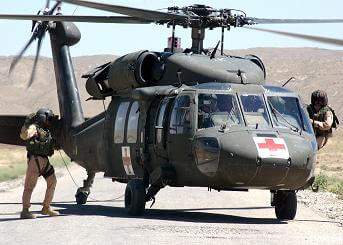
It’s known as the golden hour. After a bullet wound or other massive trauma, soldiers in the field have about one hour to get intense medical attention. After that time, the chances of survival drop drastically. The research arm of US armed forces, DARPA, has long been interested in extending that golden window of opportunity to five or six hours, enough time to medevac someone from a remote location to a hospital. Earlier in December, DARPA announced that the Texas A&M Institute for Preclinical Studies (TIPS) would be receiving $9.9 million in funding to determine if previously successful suspended animation programs for rodents could work with pigs. According to Wired, the 15 person team lead by Dr. Matthew Miller hopes to have positive results in just 18 months. That sort of quick paced research could soon pave the way to preserve trauma victims the world over as they make their way to help.
There are many mammals that hibernate, from chipmunks to grizzly bears, and each is able to preserve its cells despite a drop in heart rate and available oxygen. DARPA has funded researchers like Matthew Andrews who investigated how certain pancreatic enzymes allow squirrels to hibernate. Mark Roth, another DARPA funds recipient, has experimented with using hydrogen sulfide on mice to restrict the cells reception of oxygen. Using this chemical treatment, Roth was able to get mice to live 6+ hours with only 60% of their blood (analogous to a bullet wound). The pig research at TIPS will focus on getting techniques such as these to work with a cardiovascular system closer to that of humans. Suspended animation is a tricky process, as cells “wake-up” there are free radicals and poor reactions in mitochondria to deal with. Despite the likely difficulties, Matthew Miller envisions a time when every soldier could go into the field armed with a syringe filled with a hibernation cocktail. By treating injured squad mates with the cocktail, a soldier could preserve their colleague for later treatment. When adapted into civilian use such a drug could serve as a vital tool for paramedics, or preserve organs for transplant. When perfected, we may see suspended animation become a vital tool in space exploration or chronic illness management. Let’s just hope that such treatments will keep our loved ones among the living…and not the living dead.
[photo credit: Wiki Commons]



